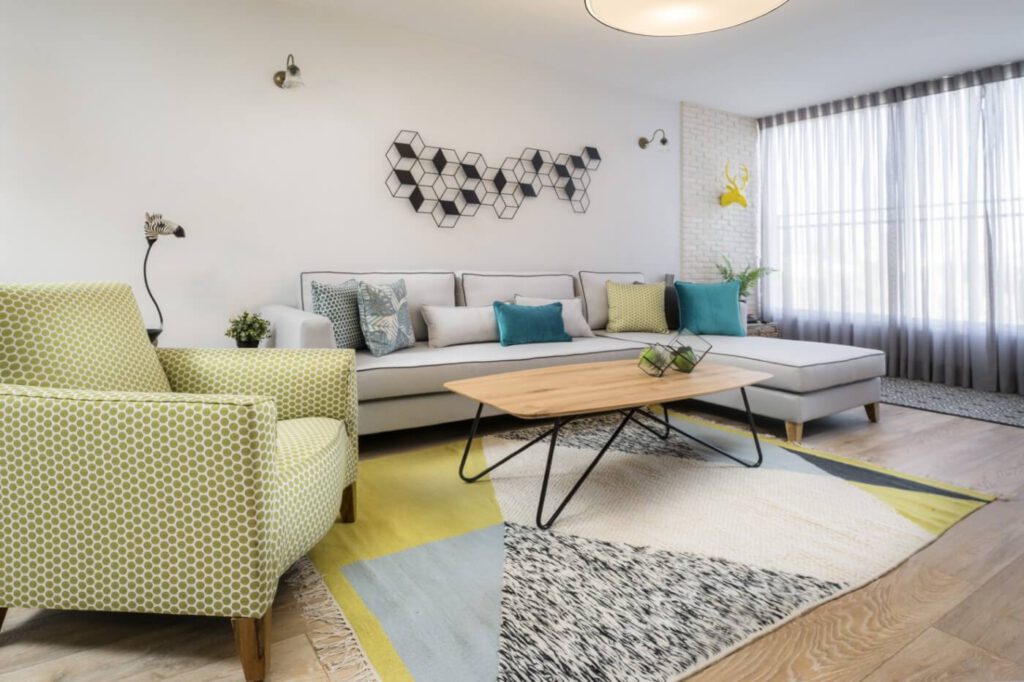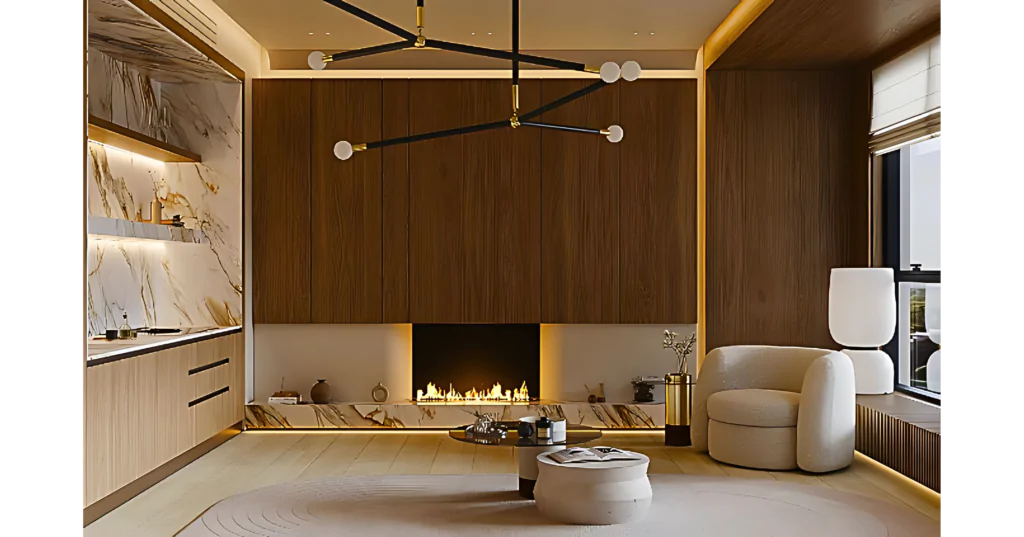The Influence of Geometry on the Soul:
Geometry plays a significant role in interior design as it shapes the environment in which we live. Different geometric shapes evoke distinct emotions and energies. For example:
– Straight lines and sharp angles can create a sense of stability and order, promote focus, and productivity.
– Curved lines and organic shapes bring a feeling of fluidity and harmony, nurturing calmness, and creativity.
– Symmetry in design can provide a sense of balance and tranquility, creating a soothing atmosphere.
What Not to Do:
While geometry has a positive influence, it’s crucial to be aware of certain design pitfalls that can negatively affect the soul:
Excessive Sharp Angles and Straight Lines:
While straight lines and sharp angles can provide a sense of stability and order, an excess of these geometric shapes can create a harsh and rigid atmosphere. Too many sharp edges may evoke feelings of tension and discomfort, particularly when they dominate a space. To maintain a balanced and calming environment, it’s essential to incorporate softer curves and organic shapes alongside angular elements.
Overloading with Geometric Patterns and Additions:
While elements and additions can add visual interest, it’s essential not to overwhelm the space with excessive and elaborate geometric patterns. Complex and busy patterns can be visually overpowering and disrupt the flow of energy within a room. They may lead to feelings of chaos and unease, negatively impacting the overall mood. Choose subtle and restrained patterns that complement the space without overwhelming it.
Lack of Balance and Harmony:
Geometry in interior design should aim to create a sense of balance and harmony. Failure in this aspect can result in a disturbing and uncomfortable atmosphere. Avoid using geometric shapes in an asymmetric or unbalanced manner that disrupts the overall visual equilibrium. An imbalance can contribute to feelings of discomfort and disorder. Strive for harmonious integration of various geometric elements, ensuring collaborative work to achieve a coherent and pleasing aesthetic.
Improving Mood and Well-being:
To enhance mood and promote overall well-being through interior design, consider the following strategies:
– Incorporate Natural Light: Maximize the use of windows and sheer curtains to invite an abundance of natural light into the space. Sunlight boosts serotonin production, which helps elevate mood and reduce stress.
– Use Calming Colors: Soft pastels, cool blues, and warm neutrals can create a serene atmosphere. Consider using colors inspired by nature, such as greens and earth tones, to promote a sense of calm.
– Introduce Plants: Plants not only add beauty but also improve air quality and connect us with nature. They have a calming effect and can reduce stress levels.
– Create Functional and Comfortable Spaces: Design your space with functionality and comfort in mind. Incorporate ergonomic furniture, cozy seating areas, and ample storage to reduce clutter and promote relaxation.
By implementing these strategies, you can create an interior environment that positively impacts mood and enhances overall well-being.
Geometry, structure, and spaces are powerful tools that can deeply influence our soul and mental state in interior design. By arranging the right geometric shapes, incorporating elements that enhance the mood, you can create harmonious and inviting environments that foster well-being and contribute to our overall happiness.
Remember, our environment’s design has a profound impact on our daily lives. So, let’s make conscious choices to design spaces that uplift us and inspire us.
It is recommended to consult with professionals, designers who specialize in interior design in various aspects, not just the visual aspect. If you have further questions or need additional assistance, feel free to contact me.






